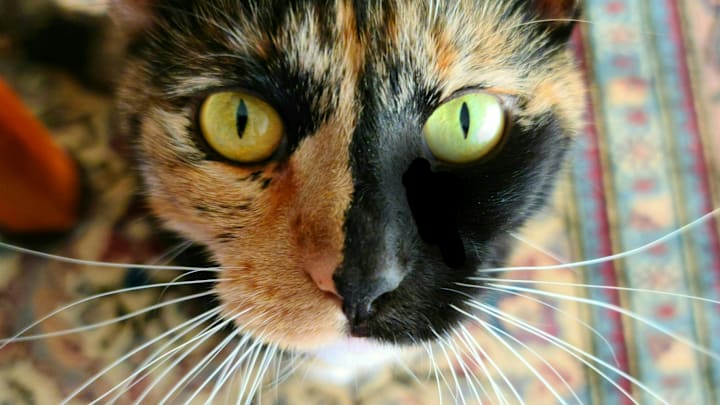Cats come in tons of beautiful colors, with some of the rarest being the leopard-like rosette pattern or the purple-tinted lilac. Split-face chimera cats have a particularly unusual appearance, with their perfectly split coat patterns. It’s only natural to wonder how the felines end up with such striking features. You can find the answer below.
How Does a Chimera Cat Happen?
According to Animal Wellness Magazine, chimerism occurs when two embryos fuse during the early stages of pregnancy. A split-faced chimera cat essentially merged with a twin that would have looked different, which explains why it appears to be two individuals put together. In the most extreme cases, chimera cats also have heterochromia, or two distinct eye colors.

The term chimera comes from the fire-breathing Greek mythical creature with the body and head of a lion, a goat’s head growing from its back, and a snake’s tail. Eventually, people used the word to refer to animals and people who have more than two sets of DNA.
You May Also Like:
- 50 Fascinating Facts About Cats
- 'Tortitude': Why Tortoiseshell and Calico-Patterned Cats Tend to Be Extra Feisty
- The Origins of 15 Fascinating Cat Breeds
Add Mental Floss as a preferred news source!
Are All Multi-Colored Cats Chimeras?
Not all chimera cats are split-faced; some have subtle differences in coat color, according to Purina. Another thing to note is that breeds like calicos (tri-colored cats, usually white with black and orange spots) and tortoiseshell cats (typically a mixture of orange and black with specks of white) can also develop the split-faced and heterochromatic features. However, that doesn’t mean they’re chimeras.
All of these interesting color patterns are usually found in female rather than male cats. This is because the genes that determine fur colors in cats are on the X chromosome. Since female mammals have two X chromosomes, they’re a lot more likely to have these unique patterns.
Do you think you know everything about cats? Test your knowledge in this quiz.
